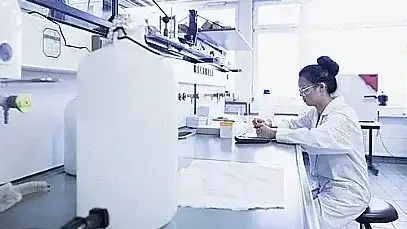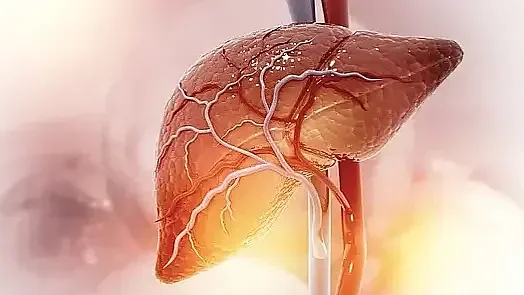How Omega-3s Reduce Liver Inflammation

Unveiling the Mechanisms Behind Omega-3s and Liver Health
Non-alcoholic fatty liver disease (NAFLD) and its advanced form, non-alcoholic steatohepatitis (NASH), are increasingly prevalent conditions characterized by hepatic inflammation and lipid accumulation. Understanding how omega-3 fatty acids reduce liver inflammation is crucial for developing effective, patient-centered management strategies. Omega-3s, particularly eicosapentaenoic acid (EPA) and docosahexaenoic acid (DHA), have shown significant anti-inflammatory effects, especially in the context of liver disease. This article explores the mechanisms behind omega-3s' benefits for liver health, supported by clinical evidence and practical recommendations.
The Biological Basis of Omega-3 Fatty Acids
Omega-3 fatty acids are essential fats that our bodies cannot produce on their own. We primarily obtain them from dietary sources such as fatty fish (like salmon, mackerel, and sardines) and plant-based options like flaxseeds and walnuts. EPA and DHA exert their beneficial effects through several key mechanisms:
- Modulation of Inflammatory Pathways: Omega-3s inhibit the production of pro-inflammatory cytokines, such as tumor necrosis factor-alpha (TNF-α) and interleukin-6 (IL-6), by downregulating the nuclear factor kappa B (NF-κB) pathway.
- Regulation of Lipid Metabolism: These fatty acids improve liver lipid composition by enhancing beta-oxidation (the breakdown of fats) and reducing lipogenesis (the production of fats).
- Enhancement of Membrane Fluidity: Omega-3s integrate into cell membranes, improving cellular resilience and signaling.
Omega-3 Fatty Acids: Mechanisms in Liver Health
1. Anti-Inflammatory Mediators
• Produces specialized pro-resolving mediators (SPMs)
• Generates resolvins, protectins, and maresins
• Limits neutrophil recruitment
• Promotes macrophage-mediated clearance
2. Lipotoxicity Mitigation
• Decreases de novo lipogenesis
• Increases fatty acid oxidation
• Reduces lipid accumulation
• Decreases inflammatory signaling
3. Gut-Liver Axis Modulation
• Restores gut microbiota balance
• Strengthens intestinal barriers
• Reduces bacterial endotoxins
• Improves gut-liver communication
How Omega-3s Reduce Liver Inflammation: Key Pathways
Anti-Inflammatory Mediators
EPA and DHA serve as precursors to specialized pro-resolving mediators (SPMs), including resolvins, protectins, and maresins. These lipid molecules actively resolve inflammation by limiting neutrophil recruitment, promoting macrophage-mediated clearance of dead cells, and reducing oxidative stress within liver cells.
Mitigation of Lipotoxicity
Lipotoxicity arises from excessive free fatty acids and triglycerides in the liver, exacerbating inflammation. Omega-3 fatty acids help mitigate lipotoxicity by decreasing de novo lipogenesis while increasing fatty acid oxidation. This dual action reduces lipid accumulation and subsequent inflammatory signaling in liver tissues.
Modulation of Gut-Liver Axis
The gut-liver axis—a bidirectional communication network—plays a crucial role in liver inflammation. Dysbiosis, or an imbalance in gut microbiota, can increase intestinal permeability, leading to endotoxemia (the presence of toxins in the blood) and hepatic inflammation. Omega-3s have been shown to restore gut microbiota balance and strengthen intestinal barriers, thereby reducing liver inflammation caused by bacterial endotoxins.
Clinical Evidence Supporting Omega-3s in Liver Disease
Randomized Controlled Trials
Several studies have investigated the therapeutic potential of omega-3 supplementation in NAFLD and NASH patients:
- A 2019 meta-analysis found that omega-3 fatty acids significantly reduced hepatic steatosis (fat accumulation in the liver) and improved liver enzyme levels, including alanine aminotransferase (ALT) and aspartate aminotransferase (AST).
- A 2020 trial demonstrated that omega-3 supplementation lowered pro-inflammatory markers such as C-reactive protein (CRP) and improved insulin sensitivity in NAFLD patients.
Observational Studies
Longitudinal studies have indicated that diets rich in omega-3s are associated with reduced incidence of hepatic fibrosis and lower progression rates from NAFLD to NASH.
Practical Applications for Omega-3 Supplementation
Dosage Recommendations
Optimal dosing for omega-3s in promoting liver health is still under investigation. Clinical guidelines suggest a daily intake of 2–4 grams of EPA and DHA for therapeutic effects in NAFLD patients. However, individual needs may vary based on disease severity and other treatments.
Dietary Sources vs. Supplements
While obtaining omega-3s from natural food sources is preferable, achieving therapeutic levels often requires supplementation. Common options include fish oil and algal oil—especially beneficial for vegetarians and vegans.
Potential Risks and Considerations
Although generally safe, high-dose omega-3 supplementation may cause gastrointestinal discomfort or increase bleeding risk due to its antithrombotic properties. Patients should consult healthcare providers before starting supplementation, particularly if they are on anticoagulant medications.
Integrating Omega-3s into Comprehensive Liver Care
Omega-3 supplementation should complement, not replace, other evidence-based interventions for liver health. These include:
- Dietary modifications: Emphasizing a Mediterranean-style diet rich in fruits, vegetables, whole grains, and healthy fats.
- Physical activity: Engaging in regular exercise to improve insulin sensitivity and reduce hepatic fat.
- Weight management: Maintaining a healthy weight to alleviate metabolic stress on the liver.
Current Guidelines and Future Directions
The American Association for the Study of Liver Diseases (AASLD) acknowledges the role of omega-3s in improving hepatic steatosis but emphasizes the need for more robust evidence to standardize dosing and treatment protocols.
Emerging studies are exploring novel formulations of omega-3s—such as emulsified forms—and combination therapies with antioxidants like vitamin E. Future research aims to identify patient subgroups that may benefit most from omega-3 interventions.
Learn more about omega-3 benefits from Harvard T.H. Chan School of Public Health.
Conclusion
Understanding how omega-3s reduce liver inflammation is vital for addressing the growing burden of fatty liver disease. By modulating inflammatory pathways, mitigating lipotoxicity, and enhancing gut-liver axis integrity, omega-3 fatty acids represent a promising adjunctive therapy for NAFLD and NASH. As research continues to evolve, incorporating omega-3s into comprehensive liver care plans offers a practical approach to improving patient outcomes.
Share this article

Dr. Irene Paragas, MD
I am a Medical Doctor, Registered Nutritionist-Dietitian, and seasoned virtual professional. See Full Bio.
-
1. Calder PC. Omega-3 fatty acids and inflammatory processes. Nutrients, 2010.
-
2. Jump DB, Depner CM, Tripathy S. Omega-3 fatty acid supplementation and liver disease. Curr Opin Clin Nutr Metab Care, 2015.
-
3. Das UN. Beneficial effects of omega-3 fatty acids in metabolic syndrome, NAFLD, and NASH. Prostaglandins Leukot Essent Fatty Acids, 2016.
-
4. Scorletti E, Byrne CD. Omega-3 fatty acids and non-alcoholic fatty liver disease: Evidence of efficacy and mechanism of action. Mol Aspects Med, 2018.
-
5. Yamada T, Uchida J. Role of omega-3 fatty acids in liver disease. Clin J Gastroenterol, 2020.
-
6. Mantzioris E, Gibson RA. The role of omega-3 fatty acids in health and disease. J Nutr Biochem, 2021.
-
7. Chen X, Liu Y, Wang Z, et al. Novel therapeutic approaches targeting inflammation in fatty liver disease: Role of omega-3 fatty acids. Gastroenterology, 2023.
Top 10 Antioxidant-Rich Foods for Fatty Liver Disease Non-alcoholic fatty liver disease (NAFLD) affects approximately 25% of the global population, making...
Hepatitis C and Fatty Liver Disease Hepatitis C virus (HCV) infection and fatty liver disease are interconnected in complex ways, posing significant risks to...
Vitamin and Mineral Dosage Calculator Maintaining a balanced intake of essential vitamins and minerals is vital for liver health, especially when managing fatty...

You might enjoy more articles by
Dr. Irene Paragas, MD
 Disease
Disease Diets
Diets Recipes
Recipes Supplements
Supplements Management
Management Calculators
Calculators Quizzes
Quizzes Glossary
Glossary
























